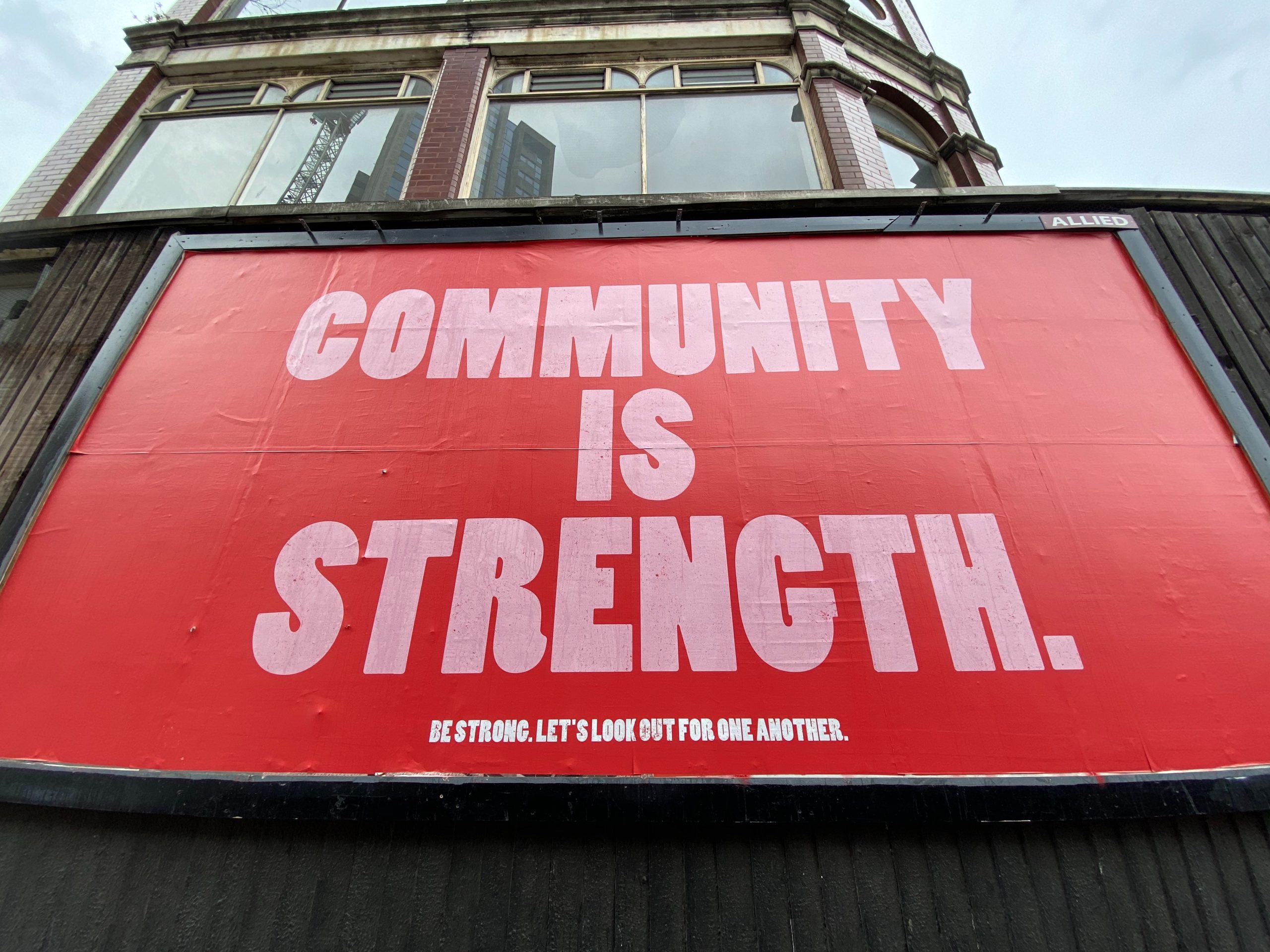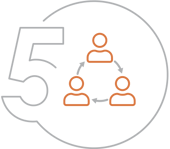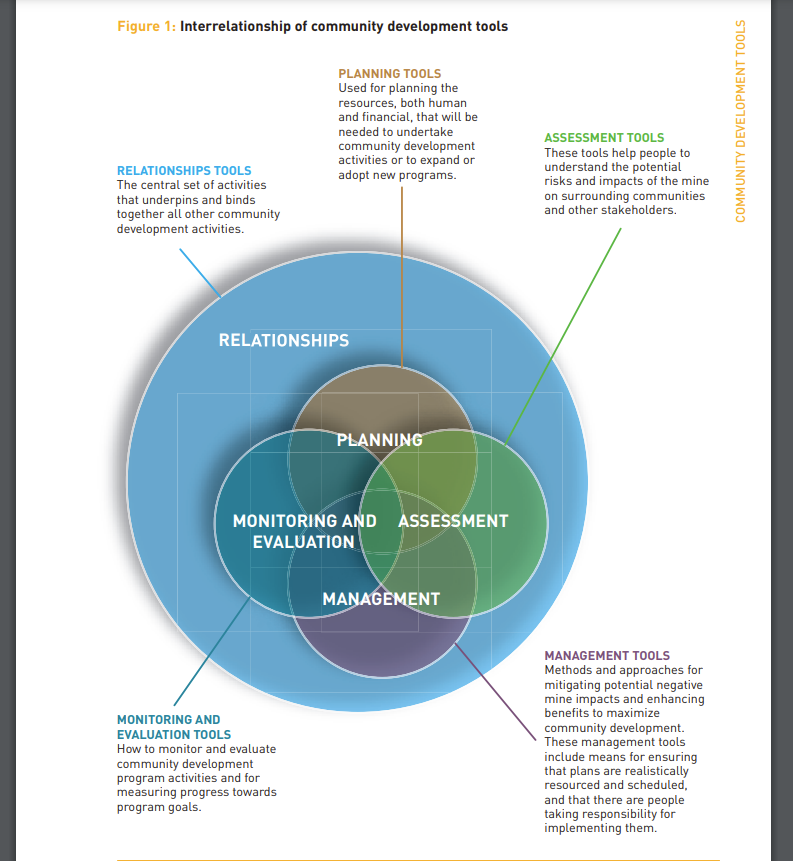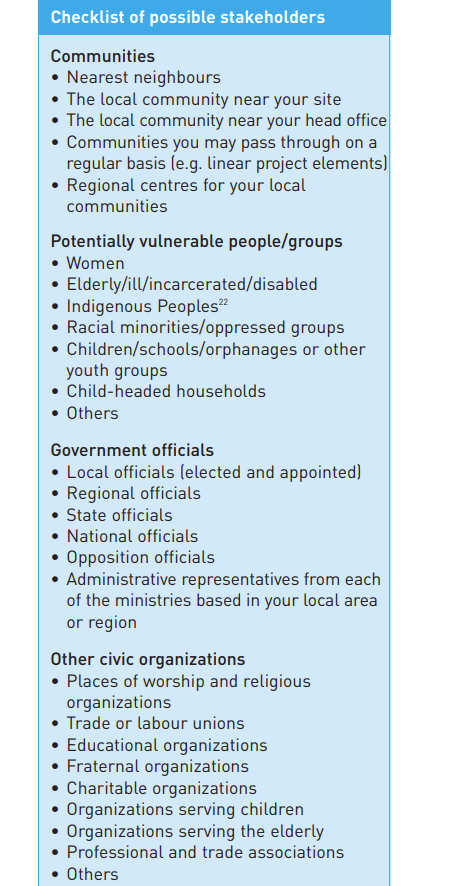133 Chapter One – Lesson Three
Chapter Essential Questions
- What is a strategic plan?
- How is a strategic plan developed?
- What is an operational plan?
- What is a vision and mission statement and how is it a part of a strategic plan?
- What is an operational plan and how does it relate to a strategic plan?
- How are staff, community members and other stakeholders involved in strategic planning and why are they important to have involved?
Lesson 3: Key Stakeholders in Strategic Planning
Outcomes:
By the end of this lesson, you should be able to:
- Explain the involvement of community in strategic planning;
- Explain the involvement of staff in strategic planning;
- Describe the necessity of all stakeholder involvement;
- Discuss your own or another First Nation communities current relationship/process with strategy formulation and identify areas of improvement.
Engaging the Community
To have a successful strategic planning program, community engagement must be a crucial aspect. Community members want to support trustworthy and credible organizations, making it necessary to connect with key audiences through strategic plans. However, before engaging with external audiences, internal strategic plan engagement is essential.
Managers, executives, and board members must be committed to the strategic plan and its ongoing monitoring and tracking system. To engage employees with the strategic plan, leadership should develop a variety of purposeful ways to connect, such as inviting managers and emerging leaders to strategic planning workshops or meetings and providing training sessions for leaders to share the plan within their departments.
Employee influencers could be trained to share strategic plan key messaging internally and externally as community ambassadors. Regular progress updates and performance metrics should be shared with employees, and programs celebrating and recognizing employee achievements should be aligned with strategic plan goals.
To cultivate external strategic plan engagement, organizations should invite customers to provide input through a strategic plan survey. They should also invite relevant community leaders to participate in discussions pertinent to their organization’s future, publish strategic plan highlights in both digital and hard-copy formats, and conduct town hall meetings to share the desired future and high-level strategies with external audiences.
Organizations could use social media to communicate brief, key messages about their strategic direction. Ultimately, community engagement with a strategic plan starts within an organization and then radiates outwards to external audiences.

There is very little support for the consultation. Often the Indigenous community is small and has limited liaison people. These people have an endless stream of paperwork — a request for a quarry, plans for a Tim Hortons franchise, farming permits, rezoning, etc. [1].
Staff in strategic planning
Many staff for Indigenous communities are often burdened with the insufficient capacity and time. Responding to the 2018 survey, one OPPI member observed that Indigenous communities may receive 150 to 200 notices per month. Now, imagine asking those same staff members to join in with strategic planning. Certain project, like strategic planning, require technical knowledge, additional community consultation and multiple meetings to meet its goals.
Below you will find a seven step process to include and collaborate with your current staff.

Stakeholder involvement
We don’t need to “create” a relationship — we already have one with Indigenous people. It is strained and broken. We need to revive and build this relationship.
Through relationship, comes the understanding of process. In Indigenous communications, they may give you a story or may talk about a situation and expect you to do the work of making the connection to the questions you asked. Some may express their ongoing, historic frustration with not having their voice heard. it’s important to hear this as context. Don’t take it personally. But take it seriously.Put away the stereotypes and listen to what Indigenous people have to say. Some of our most intelligent people have had their education on the land and in the streets. Listen to them.… Just because someone hasn’t had the opportunity to complete high school/college/university doesn’t mean they lack knowledge.
Understand that there are many roads to acquiring knowledge. Institutional (college/university/etc.) learning is just one road. [2]
Identify the right stakeholders
Successful project implementation requires effective coordination among all parties involved. Identifying key stakeholders and comprehending their roles, needs, and concerns is essential in eliciting multiple perspectives and tailoring outreach efforts to address their interests.
Engaging property owners, be these private, public, municipal, or not-for-profit entities, from the outset promotes their understanding and involvement in the process, ensuring smooth project implementation. Local government agencies help navigate municipal ordinances, utility and site constraints, and secure project funding from state and federal sources with matching local funds for construction. Developers offer their valuable insight into market conditions and opportunities, shaping the feasibility and success of the project vision.
Economic development groups provide critical guidance on current and future economic prospects for the project, in addition to benefiting local businesses and residents. Community and neighborhood groups serve as the voice of the population, advocating for the project’s benefits to their respective communities. Financial groups are vital in securing financing from private lenders and investment groups, in line with the redevelopment plan’s objectives. Environmental consultants aid in due diligence, implementing environmental cleanup plans, and ensuring the property owner meets all environmental obligations, preliminarily assessed at the site’s inception.
Develop a community engagement plan
Developing a community engagement plan is essential in depicting the aspirations and objectives of an engagement campaign, identifying the target audience, as well as the communication strategies envisaged to achieve the project’s goals. A clear plan encourages adherence to the project’s plan and ensures that all primary stakeholders are involved throughout the project’s life cycle, thereby guaranteeing their input in the process. The engagement plan should comprise:
- Identification of stakeholders involved in the project and those who would gain from involvement in the development and understanding of the project’s purpose and impact.
- Outline of in-person and virtual outreach strategies for all project phases.
- Establishing a timeline for each phase, highlighting community outreach and the persons responsible for coordinating these endeavours.
- Creating a visual representation of the project’s goals and outcomes, documenting feedback from the engagement phases and relaying the same to stakeholders, economic development leaders and regulatory officials.

Focus on equitable engagement
Transparency is now a community expectation for public projects, making traditional community engagement practices insufficient. Equitable engagement must reflect the demographics of the community and place emphasis on engaging those who will be most impacted by the project. It recognizes these past engagement limitations and supplements them with strategies to engage those who have been historically left out. Understanding the impact of a project is crucial in determining the level of community engagement needed. The Environmental Protection Agency (EPA)’s EJscreen tool helps identify areas with disadvantaged populations, potential environmental quality issues, and a combination of environmental/demographic indicators greater than usual. The greater the impact on at-risk or underrepresented populations, the higher level of engagement needed to ensure inclusive, fair, and equitable implementation.

Utilize different engagement tools
To effectively engage with stakeholders, it’s essential to employ a variety of engagement tools. These can range from in-person and virtual meetings to project blogs, newsletters, and more. When considering which tools to use, it’s important to take into account factors such as the demographics, facilities, and technology available, in order to ensure that communication is clear and effective.
Creating relationships with stakeholders and hearing their ideas can help to establish trust and encourage collaboration. Some useful methods include hosting community events or workshops to gather feedback and build support, forming project committees and workgroups, partnering with local organizations, and holding pop-up meetings or personal meetings to engage people where they are.
Regular newsletters and emails can keep stakeholders informed about project progress and encourage online feedback through social media and online surveys. Providing stakeholders with relevant information kits and access to a project website can also help to educate them about the project’s objectives.
To ensure that underrepresented communities have a voice, it’s necessary to offer alternative forms of engagement such as in-person meetings, translation services, or stakeholder meetings designed for non-English speakers. Outreach through local libraries can also be an effective way to reach these communities.

Involve stakeholders early and often
Early engagement with stakeholders and the community can positively impact public perception of a project. Each stakeholder brings unique expertise, which helps to shape the project’s vision and resolve conflicts before the plan is developed. Delaying stakeholder involvement can result in redoing parts of the project or restarting the engagement process altogether.
Stakeholders desire transparency and consistency, making regular, accurate project updates crucial for building trust. To promote a sense of ownership, involving stakeholders in hands-on activities like site planning or fundraising can help them feel connected to project outcomes. Recognizing and celebrating the contributions of stakeholders throughout the process can also increase their investment in the project’s success.
Team collaboration is most effective when stakeholders have a seat at the table. Committee involvement, personal visits, and interactive tools are all opportunities to facilitate engagement and ensure stakeholders’ voices are heard in planning, design, and implementation. Successful redevelopment projects prioritize equitable engagement and the use of a variety of communication tools that resonate with diverse stakeholders.
A shared community vision and visual representation of the project’s results can also create excitement and increase buy-in from the community. In summary, effective community communication and stakeholder engagement are essential to realizing successful redevelopment initiatives.
It’s essential to oversee and assess the progress of stakeholder identification, comprehension, and involvement in your undertaking, much like any other task you undertake. Although involving stakeholders right from the start is ideal, it’s always possible to improve your work by learning from your experiences. Evaluating the stakeholder process should be an essential aspect of the overall evaluation of your effort, and stakeholders should participate in designing that evaluation. They can provide the most valuable feedback regarding what worked and what didn’t in capturing their interest and keeping them engaged.
Choose three of the following questions to answer about your current or future stakeholders:
- What could you have done to better identify stakeholders?
- Which strategies worked best to involve different populations and groups?
- How successful were you in keeping people involved?
- Did you provide any training or other support? Was it helpful? How could it have been improved?
- Did your stakeholder analysis and management efforts have the desired effect? Were they helpful?
- Did stakeholder involvement improve the work, effectiveness, and/or political and community support of the effort?
Identifying areas of improvement
All communities have a voice, and that voice often speaks about the areas of improvement that need to be focused on as the community grows. Pictured below are some of the key pieces of beginning to improve a community and the tools that can be utilized to ensure that the process is a positive one.

Let’s start with examining relationships that currently exist in your own community. Successful community development programs, and strategic planning, hinge on relationships as the crucial component. Even the most well-crafted plans will not succeed if the various stakeholders do not trust each other enough. Therefore, it is imperative that all parties recognize who the other stakeholders are, why they are involved, and take time to get to know each other. Collaborating together is essential to create programs that are agreeable to everyone. Consultation remains the best approach to comprehend other stakeholders and to establish positive relationships with them.
Whenever you undertake a project or plan, you need to think about the impact on your community. Here are some questions for reflection to help guide this discussion with the community:
- Who will be affected by negative impacts of the project?
- Who will benefit from the project?
- Who will be responsible for implementing measures to mitigate the negative impacts?
- Whose co-operation, expertise or influence would be helpful to the success of the project?
- Who are the most vulnerable, least visible and voiceless for whom special consultation efforts may have to be made?
- Who supports or opposes the changes that the project will bring?
- Whose opposition could be detrimental to the success of the project?
- Who might have resources to contribute?
- Who will make decisions?
Not sure where to start when asking these questions? Check out the list below.


(ICMM, Community Development Toolkit, 2012)
Community development is the process of increasing the engagement and inclusion of people in the decisions that affect their quality of life. An effective community engagement strategy can:
- Build trust
- Increase brand loyalty
- Empower community members
- Provide access to multiple perspectives and expertise
- Create a culture of collaboration
- Improve communication
When it comes to community engagement, there are some key things to bear in mind. These community engagement best practices are aimed at creating a positive, cooperative space for all your community members while limiting conflict. When envisioning your project, it’s essential to take a holistic approach and consider how it will affect the economy, environment, society, and culture – the four crucial aspects of sustainable community development. While you’ve covered your project’s potential economic benefits in previous sections, it’s important to also evaluate how it aligns with preserving the environmental, social, and cultural well-being of your community.
The availability of improving community initiatives is often limited compared to the demand. Additionally, it’s important to note that the plan’s strength and its potential benefits to the community will be assessed. In today’s competitive and challenging environment, proposals by community groups should prioritize the following:
– Clearly outlining the purpose of the initiative by specifying objectives, outcomes, and timelines.
– Ensuring value for money by developing a realistic budget/cash flow and maximizing the use of funds.
– Establishing accountability through strong organizational and financial controls and governance practices.
– Building a committed community by forming an effective board, recruiting dedicated volunteers, and hiring qualified staff.
– Demonstrating strategy and coordination by showcasing how the initiative addresses a current need and aligns with local, regional, and national priorities.
– Outlining real results and future continuity by describing an evaluation plan and a final report on outcomes, and specifying ongoing funding sources for long-term sustainability.
Journal Prompt
Using the forum labelled “Course 11: Lesson 3,” make a journal entry responding to the prompt below. Ensure that you title the entry “Lesson 3”. Ensure that you title the entry “Lesson 1”. After writing a journal entry, go and make a comment on two other posts from your classmates. It can be about anything you noticed, liked, agreed with etc. The idea is to continue the dialogue about the topic.
Prompt: Thinking about your community, choose three questions to answer from the list below.
- If you could describe your community with one word, what would it be and why?
- What are your communities three biggest strengths and how can they be used to reach your communities goals?
- What is the one legacy your community is leaving behind and why?
- Where do you see your community in 5 or 10 years?
- What would you want people to say about your community and are they currently saying that? If not, why?
*View the journal entry and journal comment rubric to see how they will be marked.
| Criteria | Exemplary 4 |
Accomplished 3 |
Developing 2 |
Beginning 1 |
| Purpose | Strong voice and tone that clearly addresses the purpose for writing. | Appropriate voice and tone. The purpose is largely clear. | Attempts to use personal voice and tone. Somewhat addresses the intended purpose. | Demonstrates limited awareness of use of voice and tone. Limited evidence of intended purpose. |
| Understanding | Many interesting, specific facts and ideas are included. | Many facts and ideas are included. | Some facts and ideas are included. | Few facts and ideas are included. |
| Conventions | All grammar and spelling is correct. | Only one or two grammar and spelling errors. | A few grammar and spelling errors. | Many grammar and spelling errors. |
| Reply | Made two significant contributions to the online forum. Highly supportive of others. | Made one contribution to the online forum. Supported group members. | Attempted to contribute to online forum but was vague and unclear in the writing. | Minimally involved. Offered limited support to online group members. |
References
Community development toolkit. Open graph. (2012, July 20). https://www.icmm.com/en-gb/guidance/social-performance/2012/community-development-toolkit



